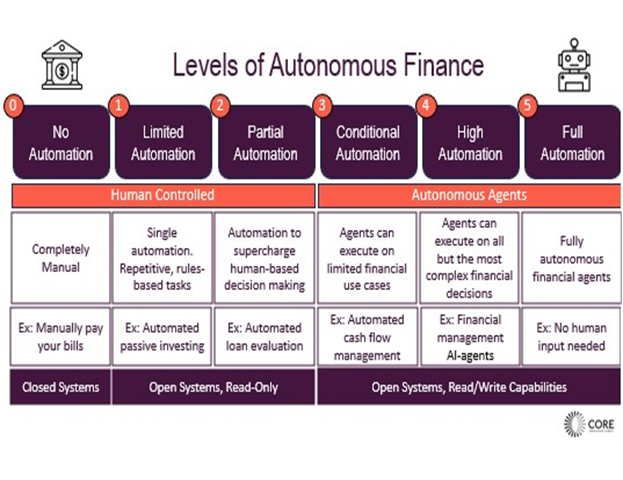What we at Core are excited about in DeFi
We believe six key areas are essential to bringing DeFi safely to the mass market.
1. Insurance
With fraudsters, human errors, and smart contract bugs, the risk of moving money to crypto markets far outways keeping deposits in traditional finance. Custody in traditional markets is backed by FDIC insurance, but in DeFi, government backed savings accounts don’t exist. Chargebacks, i.e. returning money that has been misspent or lost by a payer, provides a $40 billion safety net within traditional payment networks. In DeFi, chargebacks are currently impossible. Providing these safety nets in the crypto-world requires private insurance to step up. Only $5b of the $1.5tln (0.33%) in DeFi assets are insured, thereby creating a massive opportunity for insurance providers.
One decentralized solution that was a first mover, Nexus Mutual, issues insurance policies that are largely priced by token holders with insurance claims also voted upon by token holders. This incentive system doesn’t feel adequate as token holders who vote on claims are incentivized in the short term to say no in order to avoid paying out funds. On the other hand, Risk Harbor offers parametric insurance, where claims are evaluated by smart contracts and executed automatically. This is innovative, but only time will tell if it can scale to other types of insurance products beyond parametric smart contract insurance.
Lack of historical data combined with high volatility, makes underwriting an increasingly difficult task. However, solutions, such as Breach Insurance, that work with traditional carriers to produce innovative underwriting models can derisk the industry and increase access to millions of risk-averse consumers and businesses. The key to scaling will be ensuring that as the market expands, insurance is still cheaper than interchange fees and other traditional banking fees. Overtime, more data will decrease fraud risk, expand the insurance products available, and ultimately bring millions more into crypto.
2. Decentralized Identity
One of the core themes driving crypto’s initial pull was the belief in anonymity. In a regulated and mainstream environment, however, there is a need to compromise on this anonymity, and digital identities will be required to build trust. A decentralized identity can be that compromise, providing identity without centralized control. Two of the biggest names in DeFi, Compound and Aave have already created “permissioned” protocols called Compound Treasury and Aave Pro, respectively, to cater specifically to institutions that require identity, e.g. government regulated entities (banks).
New technologies, such as Zero-Knowledge Proofs (ZKP), combine the anonymity of DeFi with the security of centralized finance. Homomorphic encryption is being used by companies like Enveil to perform KYC on data that remains encrypted. Vendors, such as OnFido, are bringing KYC/AML to DeFi. Bloom and Teller are building a decentralized credit rating for consumers. ArcX is building decentralized passports where users access certain protocols based on their on-chain history. Notabene enables safe transactions between exchanges by building regulatory compliant identity technology. And there are many more companies innovating in this nascent space.
Regulatory pressure combined with DeFi’s push into the mainstream is already moving us towards a world with increased DeFi identity. And the best DeFi companies will incorporate identity protocols well before they are mandated.
3. DeFi for Businesses
Finding product market fit for DeFi started with consumers. Now, there are opportunities for DeFi to build the infrastructure needed to scale transactions to businesses.
This will require robust developer tooling that makes it easier for businesses to engage with DeFi. Wyre developed payments APIs to power crypto payments for businesses. Circle established a stablecoin, creating an effective bridge between fiat and decentralized payments. Paxos helps with custody and regulated blockchain infrastructure for institutions. Ripple, a Core portfolio company, enables cheaper and faster cross-border transactions, a huge pain point for international businesses. Multis aims to offer treasury services for crypto-focused businesses.
Tooling for businesses is just getting started and I’m excited to see smart contracts expand through this ecosystem and automate everyday tasks.
4. Friendly UI/UX and Embedded Crypto
In order to develop the basics, crypto protocols initially focused on functionality rather than user experience. We are now at the point where poor interfaces and difficult user experiences are keeping millions of people out of DeFi. For example, to move money into the 20% yielding Anchor protocol, I had to (1) purchase ethereum on an exchange, (2) transfer money to my ethereum-based wallet, (3) transfer money from my ethereum-based wallet to my terra-based wallet (an alternative blockchain to Ethereum that Anchor is built on) using a complex key, (4) wait 3+ minutes to see if I did it right, or if I made a mistake and lost my money forever, and (5) finally move that money from my terra-based wallet into the anchor protocol. To feel confident even attempting this transaction, I had to watch a 30 minute instruction video. While Anchor is an amazing technological advancement, this complex user experience must be simplified.
Luckily, this is where fintech has excelled when compared to traditional finance — and where I expect the industry to excel again with decentralized finance. Recently, the neobank Current announced a partnership with Acala, a decentralized blockchain platform, to build DeFi infrastructure on the back of its centralized frontend. Conduit has created an API-based platform to connect traditional finance to all of DeFi. Yotta Savings, a Core portfolio company, is building a crypto wallet powered by Anchor protocol (would have made my life much easier). Eco is building a decentralized fintech application without ever mentioning the word ‘blockchain’. As DeFi integrates with fintech, users will avoid complicated money movement, confusing wallet keys, ridiculous seed phrases, and much more that makes using DeFi now so intimidating.
The future is a combination of fintech and DeFi, where complex technology recedes into the background. In fintech, banking-as-a-service, payments-as-a-service, lending-as-a-service, etc. have all become major industries. Over time, the DeFi equivalents of these businesses will establish themselves capitalizing on the advanced user experiences fintech has already built.
5. Scalable Infrastructure
Currently, DeFi is inhibited by infrastructure that is, at times, costly and slow. Two components of the DeFi technology stack critical to establishing a more scalable infrastructure are the transaction layer and oracles.
The transaction layer consists of (1) the underlying blockchain technology, such as Ethereum, known as a “Layer 1” and (2) the overlaying network, which creates more efficient transactions, known as a “Layer 2.” Visa, in traditional payments, processes 24k transactions per second. For comparison Ethereum (a Layer 1 blockchain) processes only 15 transactions per second, while Solana (an alternative layer 1 blockchain) claims it can process 50k transactions per second using an innovative “Proof of History” consensus mechanism. Increasing processing capability is essential to scaling and facilitating high speed global transactions.
On the cost side, Polygon aggregates ethereum-based transactions (making it what’s known as a Layer 2) and, in doing so, offers low-gas fee transactions (gas fees are the cost of completing a transaction on a blockchain). Offchain Labs’ Arbitrum uses “optimistic rollups” and proofs well beyond my pay-grade to create more scalable and minimum cost ethereum transactions. I am confident that we are in the early innings of scalable blockchain technologies and these speed and cost issues are not a long term dilemma.
Moving down the stack, “oracles” supply data to the transaction layer and are necessary for smart contracts to function appropriately. As of now, oracle solutions are either fast but insecure or secure but slow. Insecure oracles are vulnerable to hacks that can break down the entire decentralized system, while slow oracles create a negative user experience. Scalable oracles (ie., fast and secure) will be key to bringing DeFi mainstream.
6. Infrastructure for the Productive Use Cases of NFTs
NFTs have had an incredible year, hitting $2.5bn in transactions through the first half of 2021 alone. While I am skeptical of individual NFT projects (something just doesn’t sit right about jpeg rocks selling for millions of dollars), the underlying technology is undeniably exciting and tough to ignore when companies like Visa are getting involved. Communities are growing around these NFTs, arguably more so than in any other part of DeFi.
Creators, particularly artists and musicians, are increasingly monetizing themselves on the internet as “social tokens” that go up and down in value based on the creator’s popularity. Gamers are acquiring assets through in-game building and trading. Real estate transactions are becoming tokenized, i.e. where a physical asset is represented in digital form, at companies such as LoanSnap, a Core portfolio company, and Fabrica. Even financial powerhouses like State Street are building teams to address the new industry.
NFTs increasingly represent a new asset. And as with any asset, financial services will develop around it. Infrastructure that enables the safety, accessibility, and functionality of NFTs could be immensely valuable even as individual projects rise and fade.
Together to the masses!
At Core, we believe that modernizing financial infrastructure on the backend can greatly increase access and affordability of financial services on the front end. DeFi can be at the heart of this. But only if we all work together, including regulators, credit networks, banks, and businesses alike.
If you’re building in these areas please reach out. We’re excited to build this new, safe, scalable, and economic world of finance together.
Hit me up on twitter if you want to talk! @roosontheloos




